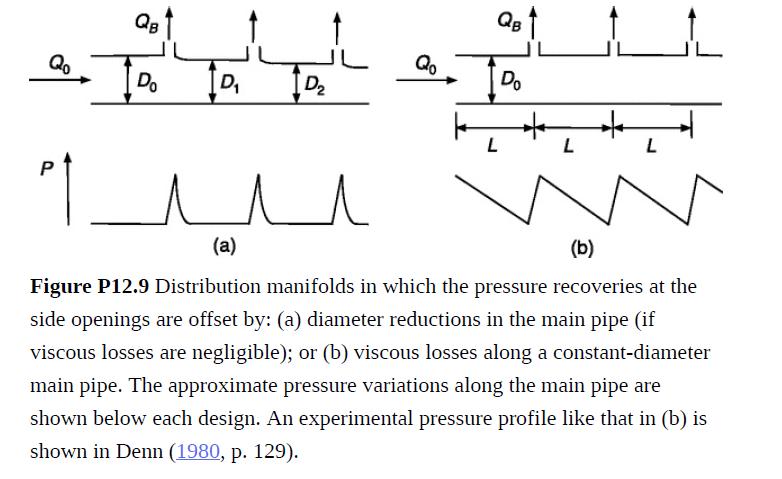In distribution manifolds it is often desired to have the same flow rate Q B in each
Question:
In distribution manifolds it is often desired to have the same flow rate QB in each branch. If the branches are identical, the inlet pressure at each would need to be the same. There are at least two strategies for making those pressures uniform. If viscous losses along the main pipe are negligible, a series of diameter reductions could keep the velocity from falling and the pressure from rising, as shown in Fig. P12.9(a). If the losses are not negligible, a constant pipe diameter D0 and a certain length L between branches could be chosen so that the pressure recovery at a branch is exactly balanced by the pressure drop in the next pipe segment, as shown in Fig. P12.9(b). Suppose that the flow is turbulent everywhere and let the initial diameter, flow rate, and velocity for both cases be D0, Q0, and v0, respectively.
(a) For the case with negligible losses and variable pipe diameter, let Dn be the diameter after branch n. How should D1 differ from D0? What should Dn be in general (n≥1)?
(b) For the case where the viscous pressure drops balance the pressure recoveries, derive a relationship to guide the choices of D0 and L. Explain how it could be used.
(c) For air flow with v0 = 12.3 m/s, D0 = 100 mm, DB = 25 mm, L = 1.8 m, P1 = 1.025 atm, and P0 = 1.000 atm, how would the pressure drop in the first segment compare with the pressure recovery at the first branch? Which of the two approaches would be most applicable in optimizing such a manifold?
Step by Step Answer:

Introduction To Chemical Engineering Fluid Mechanics
ISBN: 9781107123779
1st Edition
Authors: William M. Deen





